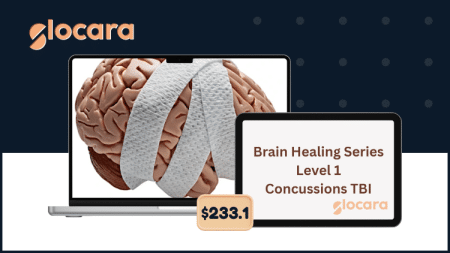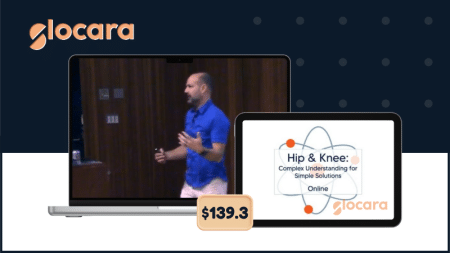MPS Pelvic Health – Level 2 by MPS Courses – Instant Download!
Pelvic floor cases are rarely linear. Scar tissue alters glide. The nervous system holds onto protection. Symptoms ping‑pong between pain, urgency, and sexual dysfunction. MPS Pelvic Health Level 2 gives you a practical framework to navigate this complexity with confidence. Building on the foundations of Level 1, you’ll learn how to combine microcurrent point stimulation (MPS) using the Dolphin device, vagal nerve applications, and targeted scar release with the manual skills you already use—so patients feel relief sooner and maintain it longer.
This on‑demand course from MPS Courses is designed for pelvic health PT/OTs, women’s and men’s health clinicians, and bodyworkers operating within their scope of practice. Through clear protocols and clinical reasoning, you’ll learn to calm the autonomic nervous system, address fascial/dermal restrictions related to episiotomy and perineal tearing, and progress clients through reproducible pelvic floor sequences—without losing sight of safety, red flags, or referral criteria.
Format: Digital training (approx. 1.59 GB).
Investment: $193.90.
Prerequisite (recommended): Pelvic Level 1 or Intro to MPS Pain Therapy & Scar Release Therapy (online or in‑person).
Clinical note: This course is educational and not a substitute for individualized medical diagnosis or treatment. Always follow local scope‑of‑practice laws and device guidance.
Free Download the MPS Pelvic Health – Level 2 by MPS Courses – Includes Verified Content:
Why it matters
Pelvic health is a whole‑system conversation. Pain and dysfunction are often sustained by a mix of myofascial restriction, autonomic dysregulation, scar adhesion, and behavioral guarding. Treating just one layer can create gains that fade. Level 2 shows you how to stack interventions—microcurrent for neuromodulation and tissue tone, vagal nerve stimulation for down‑regulation, and precise scar work to restore mobility—so relief holds between visits and patients progress session to session.
For busy clinicians, the payoff is twofold: better outcomes and clearer decision trees. Protocolized maps mean you’re not reinventing treatment each time; instead, you iterate within a proven structure and document measurable changes in symptoms, function, and tolerance to activity.
Benefits
- Upgrade complex‑case confidence with step‑by‑step pelvic floor protocols you can apply the very next day.
- Calm the nervous system using vagal strategies that reduce threat perception and improve pelvic floor coordination.
- Improve tissue mobility by addressing dermal and fascial restrictions from episiotomies and perineal tears.
- Integrate microcurrent with manual release to influence tone, trigger points, and autonomic balance.
- Address common presentations (dyspareunia, urgency/incontinence, cycle‑related pain) with reproducible flows.
- Provide home‑care options (self‑applied vagal stimulation, gentle scar routines) to extend results between sessions.
- Document with clarity—track progress using symptom scaling, function goals, and tolerance markers.
- Differentiate your practice with evidence‑informed, holistic methods your patients can feel.
What you’ll learn
- Level 1 refresher in context—quick review of foundational pelvic floor pain protocol and key acupoints/trigger points as a launchpad for advanced work.
- Microcurrent balancing therapy—parameter selection, sequence logic, and safety considerations when using the Dolphin device for pelvic‑related presentations.
- Vagal nerve stimulation—external, non‑invasive methods to support down‑regulation; when to use in‑session vs. as a home routine; integrating with breath and positioning.
- Scar mapping & release—stepwise strategies for episiotomy and perineal tear patterns; comfort, consent, and communication; how to pair microcurrent with gentle manual work.
- Protocols for common symptoms—clinically reasoned flows for dyspareunia, cycle‑related pain (dysmenorrhea), urinary incontinence, and pelvic organ support complaints—always with screening and referral criteria in mind.
- Male pelvic pain considerations—adapting protocols for prostate‑related discomfort and pelvic floor over‑activity.
- Nervous‑system reset points—how and when to apply “reset” sequences to improve tolerance for internal/external techniques.
- Home program design—clear, sustainable self‑care that extends clinic gains without overwhelming patients.
MPS Pelvic Health – Level 2 by MPS Courses – Watch Content Proof here:
Key features / modules
1) Quick Refresher: Foundations That Make Level 2 Click
- Summary: Pelvic Floor Level 1 — Align terminology, safety checks, and baseline flow.
- Summary: Pelvic Floor Pain Protocol — Where to start, how to adapt, and when to progress.
- Summary: Key Acupoints for Pelvic Floor — Point selection logic (meridian‑inspired and neuromyofascial) for common patterns.
2) Therapies to Enhance Manual Release
Blend microcurrent with graded manual work to normalize tone, reduce guarding, and restore glide. Learn session pacing that respects tissue reactivity and nervous‑system state.
3) Vagal Nerve Applications
- Vagal Nerve Stim for Pelvic Floor — Rationale for down‑regulation and pelvic floor coordination.
- Applying Vagal Stim Clinically — External ear/cervical placements, timing within a visit, contraindications.
- Applying Vagal Stim at Home — Simple, patient‑safe routines to reinforce calm between sessions.
4) Microcurrent Balancing Therapy
Dolphin‑based sequences to influence autonomic balance, trigger points, and pelvic pain patterns—paired with breath, positioning, and post‑session stabilization.
5) Scar‑Focused Care
- Special Pelvic Floor Scars — Identify and prioritize scar patterns affecting function and comfort.
- Episiotomies & Perineal Tears — Trauma‑informed approach to assessment and treatment.
- Releasing Episiotomies & Perineal Tears — Stepwise microcurrent + gentle manual protocols; consent scripts.
- Neuro‑Reconnecting Post‑Episiotomy Scar — Techniques that aim to restore sensation and coordination.
- Reconnecting Vital “Kidney” Energy — Meridian‑inspired balancing for patients open to East‑Asian‑medicine frameworks (optional layer for integrative clinics).
6) Focused Protocols by Presentation
- Dyspareunia Pain — Desensitization paths that respect tissue and nervous‑system thresholds.
- Pelvic Organ Support Complaints (collapsed rectum & vagina) — Adjunct strategies to complement medical care and pelvic floor training.
- Dysmenorrhea — Cycle‑aware support for cramping and sensitivity.
- Urinary Incontinence — Combine neuromodulation with coordination cues and home practice.
- Menstruation—Irregular — Nervous‑system and myofascial balancing to support symptom tracking.
- Urinary Retention (incl. renal concerns) — Screening, red flags, and referral guidance; supportive adjunct only, not a treatment for renal failure.
- Prostate—To Reduce — Considerations for male pelvic floor over‑recruitment and discomfort.
7) Nervous System Reset & Close
- Nervous System Reset Points — Short “reset” maps to end sessions calm and integrated.
- Finishing Off — Documentation, patient education, and progression planning.
Who it’s for
- Pelvic Health PTs & OTs seeking advanced, integrative tools to complement internal and external techniques.
- Women’s & Men’s Health Clinicians (within scope) who want reproducible protocols for complex presentations.
- Bodyworkers/Manual Therapists with pelvic training and legal scope who want to add microcurrent and scar strategies.
- New‑to‑intermediate pelvic providers ready to move beyond one‑off techniques into full‑session flows.
Recommended prerequisite: Pelvic Level 1 or Intro to MPS Pain Therapy & Scar Release Therapy. Always follow your license, training, and local regulations.
Elevate your pelvic health outcomes with a system that respects the whole person.
Enroll in MPS Pelvic Health Level 2 by MPS Courses — $193.90, digital access (~1.59 GB).
Master microcurrent, vagal applications, and scar‑focused care you can put to work on your very next shift.
- Enroll now to unlock the full protocol library and clinical demos.
- Follow the step‑by‑step flows to simplify decision‑making in complex cases.
- Extend results at home with patient‑friendly routines that keep momentum between visits.
Your patients are ready for lasting change—give them care that holds.











Reviews
There are no reviews yet.